National monuments of Singapore: Saint Joseph's Church
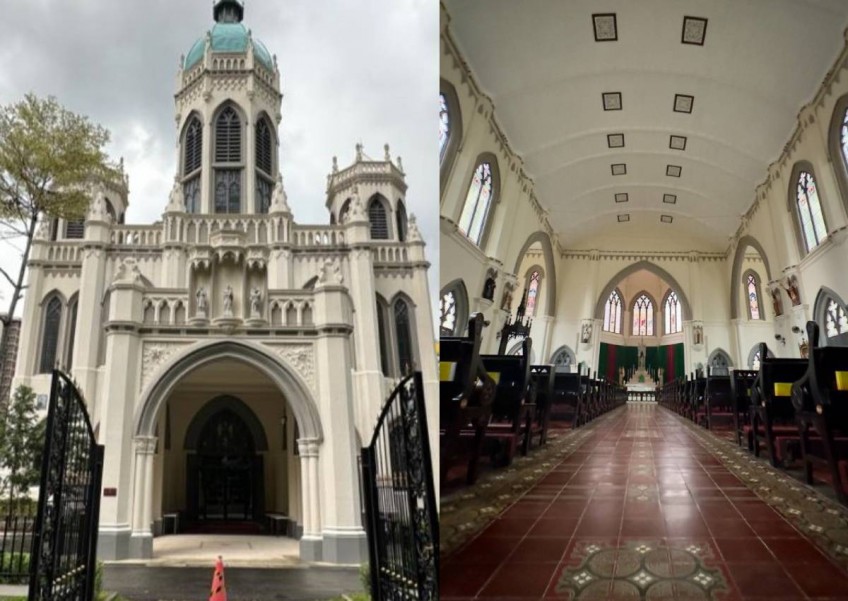
What is a national monument? Who gazettes them? How many national monuments are there in Singapore?
To date, the Preservation of Sites and Monuments, a division of National Heritage Board, has identified and gazetted 75 buildings, structures and sites of national significance as an integral part of Singapore’s built heritage.
And we're here to tell you all about them — one National Monument at a time!
You've probably passed by or stepped into more than a few of them without realising they were National Monuments: Al-Abrar Mosque, Asian Civilisations Museum, the Civilian War Memorial, Saint Andrew's Cathedral, the Esplanade Park Memorials, Fort Siloso on Sentosa — no need to plan an itinerary for friends visiting from overseas, just show them this article.
In this edition, we spotlight one of the oldest Catholic churches on our Little Red Dot, Saint Joseph's Church.
Saint Joseph's Church was the 51st building to be gazetted as a National Monument. Located near other National Monuments such as Maghain Aboth Synagogue, Church of Saints Peter and Paul, and Cathedral of the Good Shepherd, Saint Joseph's Church is located close to MRT stations Bras Basah, Bencoolen and Bugis.
Dates built:
Milestones:
Date gazetted: Jan 14, 2005.
[embed]https://youtu.be/bjw88ABp-xA[/embed]
Saint Joseph’s Church on Victoria Street was the headquarters of the Portuguese Mission in Singapore and one of Singapore’s oldest Catholic churches. The Portuguese Mission in Singapore was established by Father Francisco da Silva Pinto e Maia of the Congregation of Priests of the Missions, a Portuguese missionary who arrived from the Portuguese colony of Macau in 1825.
Initially, Father Maia offered Holy Mass in the residence of former naval surgeon Jose d’Almeida Carvalho e Silva (also a Portuguese) on Beach Road, where Raffles Hotel stands today.
On 14 Dec 1851, the foundation of the Portuguese Mission’s new church, the Church of São José (in English: Saint Joseph) was laid by the vicar, Father Vicente de Santa Catarina.
The church was built with funds collected from the public – both Catholics and non-Catholics – and a generous donation from King Ferdinand II of Portugal. The new church, dedicated to Saint Joseph, was completed and blessed in 1853.

Over the years, the congregation grew steadily, and a larger church was in order.
Bishop João Paulino de Azevedo e Castro of Macau laid the foundation stone on 21 Aug 1904, but work only began in 1906 after the old Saint Joseph’s Church was demolished.
In 1912, the church was finally completed and solemnly blessed on 30 Jun that same year by the same Bishop Castro. The former headquarters of the Portuguese Mission (present-day Parochial House in the compound) was also constructed concurrently.

To maintain St Joseph’s Church’s Portuguese character, the bishop of Macau had continued to post priests to the church.
However, the bishop subsequently decided to stop sending missionaries to the church, and the last link with the Portuguese Mission was severed when rector Benito de Sousa ended his term with the church on 31 Dec 1999.
The jurisdiction of Saint Joseph’s Church was transferred to the Archdiocese in Singapore in 1981, and together with members of the Eurasian community, Catholics of all races worship in the church today.
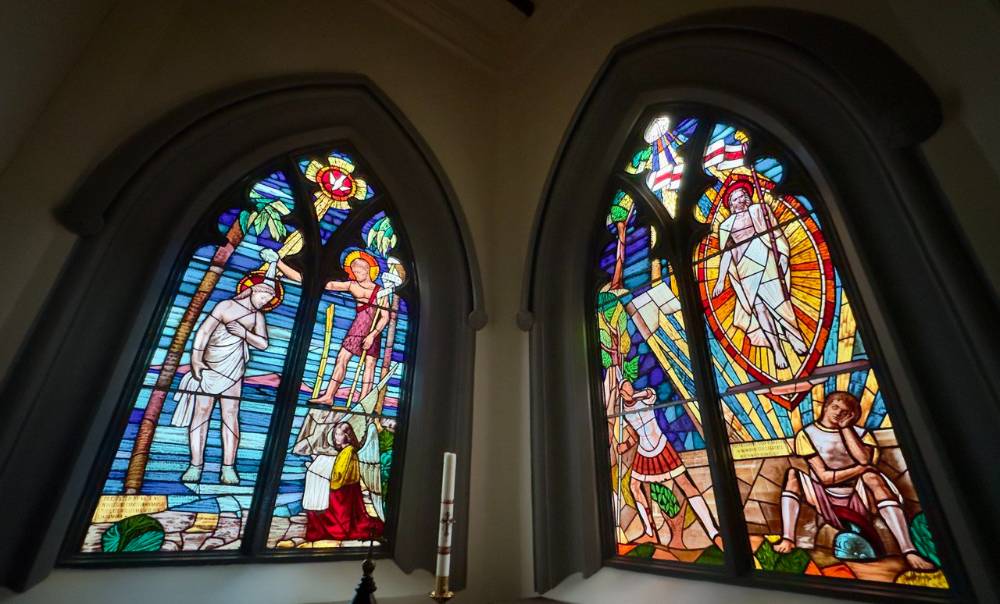
Besides ministering to the local Catholic community, the Portuguese Mission also played an active role in children’s education. Concerned with the high illiteracy rate among the children of poor parishioners, Father José Pedro Santa Anna de Cunha (the assistant to the parish priest) established Saint Anna’s School in a little house on Middle Road in 1879 to provide free tuition to children.
As the enrolment grew, the Portuguese Mission decided to build proper school buildings within the grounds of Saint Joseph’s Church. Construction of the new school began in late 1885, and was completed within a few months.
The school later became Saint Anthony’s Convent for girls and Saint Anthony’s Boys’ School.
Although the schools have since moved to new premises, the former school buildings remain as reminders of the Portuguese Mission’s involvement in education.
In addition, the church provides help for the poor through the Society of St Vincent De Paul and St Anthony Bread Fund. It also contributed to fund-raising efforts such as the Fire Relief Fund for those affected by the Tiong Bahru fire in 1934.
Fun fact: In 2007, during repainting of the church, painters discovered the original ornamental plasterwork from the 1900s underneath the paint.

Built in the plan of a Latin cross, Saint Joseph’s Church was designed in the Neo-Gothic style, which is characterised by the generous use of lancet (lance-shaped) arches in its doorways and fenestration (the arrangement of windows). The church has an octagonal belfry, capped with a dome and surmounted by a cross. On either side of this belfry are two smaller cupola-like (dome-like) towers.
Typical Portuguese blue-and-white ceramic tile-work called azulejo decorates the front facade. Added in 1950 to commemorate the visit of the Pilgrim Statue of Our Lady of Fatima from Rome, this beautiful tile-work depicts scenes of the apparition of the Blessed Virgin Mary in Fatima, Portugal, in 1917.
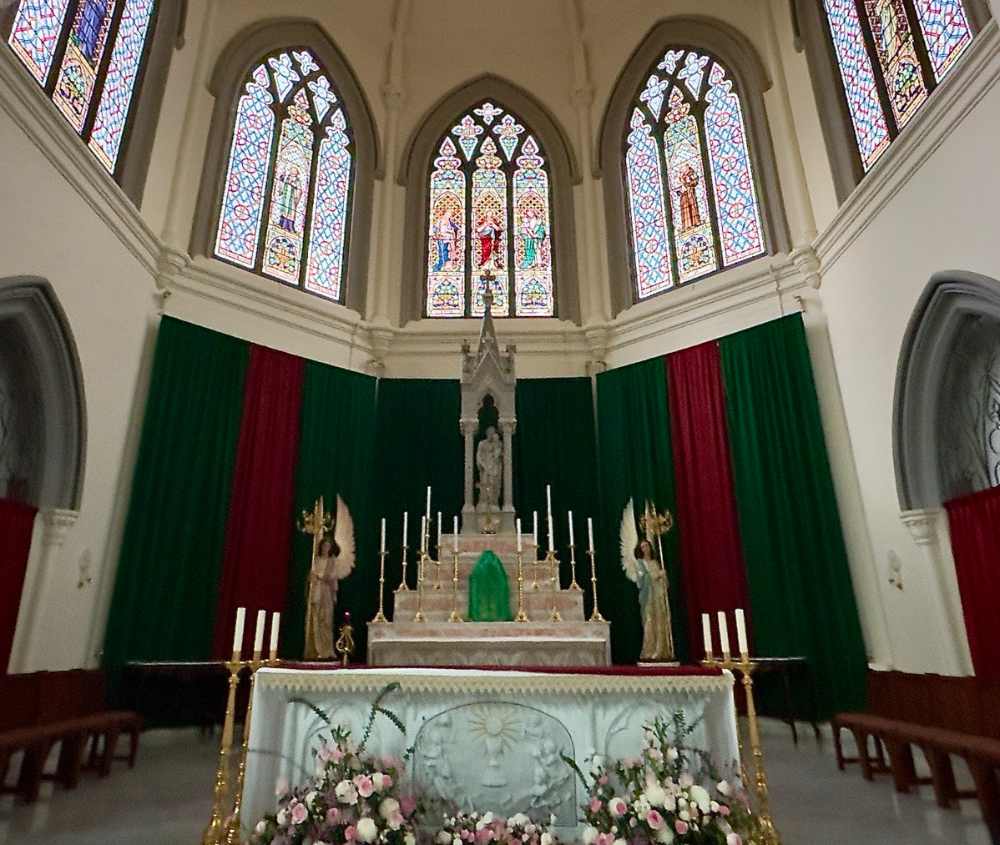
Inside the church, a statue of Saint Joseph, the patron of the church, is enshrined on the marble high altar in the sanctuary. Statues of Jesus, Virgin Mary, and saints are installed on altars and pedestals that surround the entire church interior.
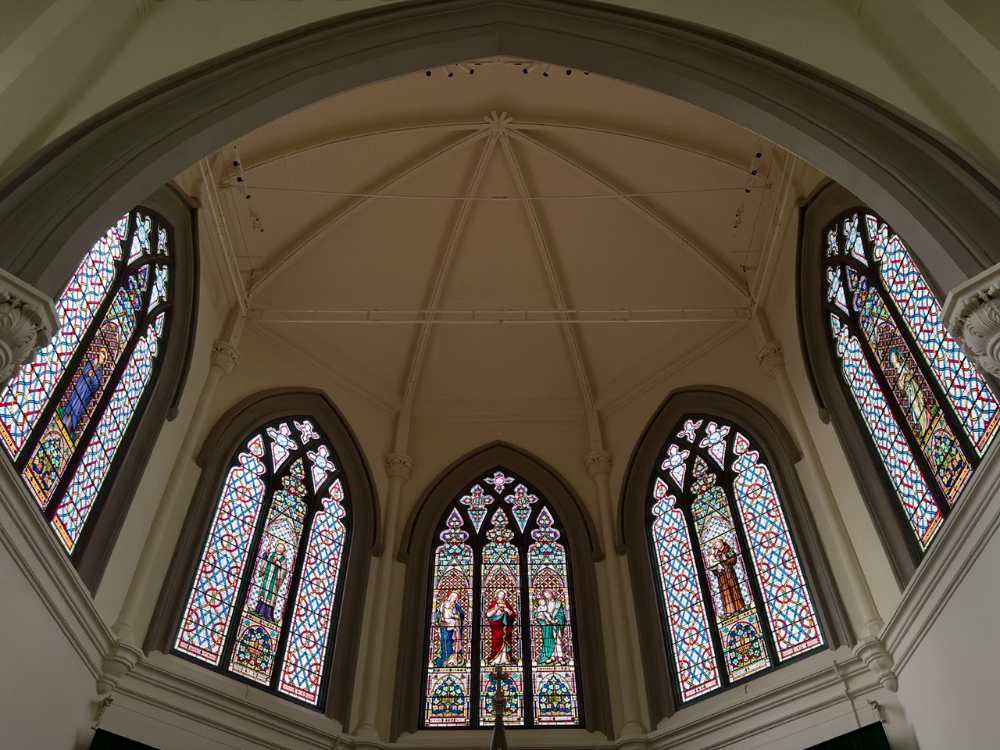
Stained-glass and coloured-glass windows – also a prominent element of Neo-Gothic architecture – illuminate the interior. In fact, Saint Joseph’s Church has one of Singapore’s largest collections of religious stained-glass windows.
The magnificent windows were produced by Jules Dobbelaere, a Belgian who was arguably the world’s most well-known stained-glass craftsman of his time.
He was also commissioned to make the equally exquisite stained-glass windows for the Chapel of the Former Convent of the Holy Infant Jesus.
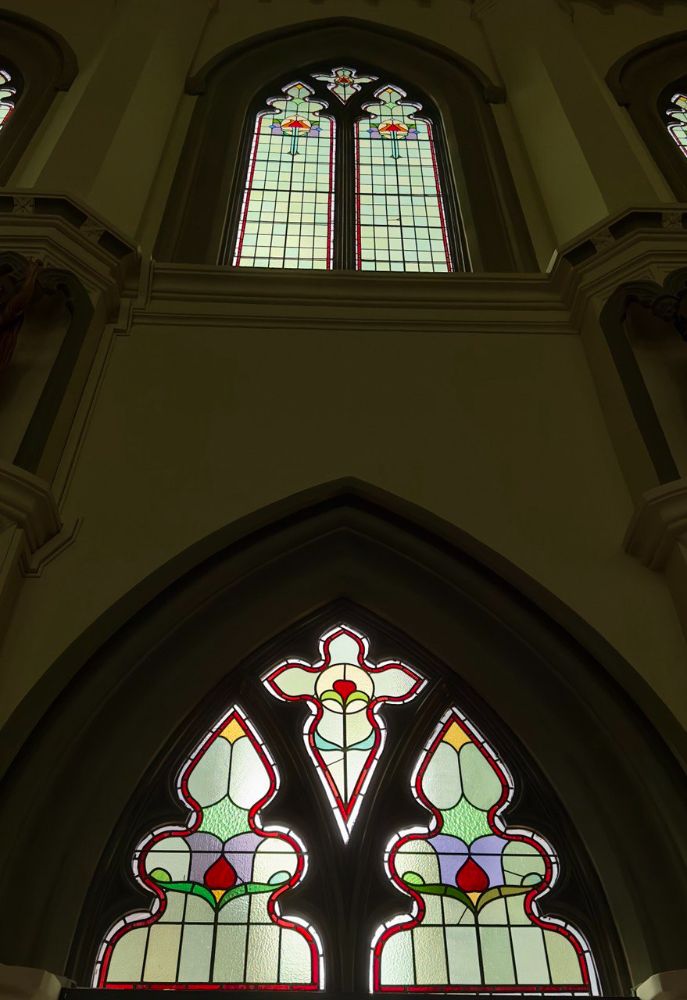
Regular visiting hours are 10am to 7.30pm on weekdays, and 9am to 7pm on weekends.
Entry is free. Find out more here.
This article was first published in Wonderwall.sg.
ALSO READ: National Monuments Of Singapore: National Museum